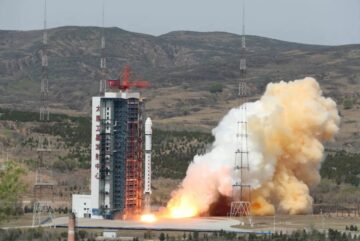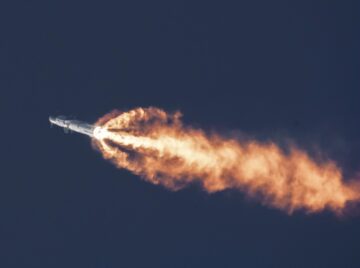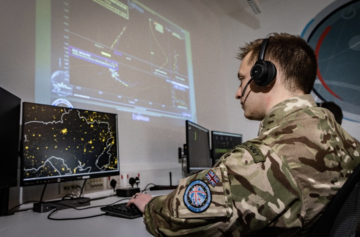WASHINGTON — As the U.S. Space Force continues to refine its plan to leverage commercial services, a top general said he expects space domain awareness to be one area where private sector capabilities will be increasingly needed.
With more congestion and threats to satellites in orbit, the Space Force will need more sophisticated space tracking data and analytics capabilities that can transform raw data into actionable intelligence on activities in orbit, said Lt. Gen. David Miller, commander of Space Operations Command.
Based at Peterson Space Force Base, Colorado, the Space Operations Command is responsible for training and fielding combat-ready forces.
Speaking with reporters Feb. 27, Miller said services provided by commercial satellites can fill critical capabilities but the Space Force has to carefully look at the pros and cons compared to government-owned systems, and activities performed by military personnel.
“Where they can provide operational utility, mission resilience, rapid reconstitution and backstopping for core capability, I’m all in, and I want to see it happen,” he said of commercial services.
The “price point has to allow us to leverage and maintain that capability,” he said. Further, “it has to be reliable, but also happen on a timeline that meets our mission requirements.”
Space domain awareness is one area where commercial companies can help, he said. “I want to leverage capability for analytics, data interpretation, speed in decision cycles.”
Need for actionable intelligence
Space Force officials have pointed out data in and of itself is not overly helpful unless it can be quickly analyzed and interpreted.
Space domain awareness refers to the ability to detect, track and identify objects in orbit, as well as monitor space weather and other activity that could impact operations. It’s considered crucial for things like warning of potential collisions with satellites or spotting potential adversary threats.
Officials point out that the number of satellites and debris objects in orbit has increased significantly, making it challenging to track, maintain custody of threats, and prevent collisions effectively. And they note that legacy systems designed for cataloging objects in space are insufficient for the complexities of modern space operations.
Miller said the commercial strategy has been a “really collaborative process” and the Space Operations Command provided input. The document, which examines how the Space Force could partner with the commercial space industry, is being coordinated with the Pentagon’s space policy and is expected to be released in the near future.
“The demand for space power is only increasing, it’s not decreasing,” Miller said. “There’s more mission areas to be plowed, some to be provided by commercial partners and allies.”
- SEO Powered Content & PR Distribution. Get Amplified Today.
- PlatoData.Network Vertical Generative Ai. Empower Yourself. Access Here.
- PlatoAiStream. Web3 Intelligence. Knowledge Amplified. Access Here.
- PlatoESG. Carbon, CleanTech, Energy, Environment, Solar, Waste Management. Access Here.
- PlatoHealth. Biotech and Clinical Trials Intelligence. Access Here.
- Source: https://spacenews.com/space-force-to-lean-on-private-sector-for-space-tracking-data/
- :has
- :is
- :not
- :where
- 27
- a
- ability
- actionable
- activities
- activity
- adversary
- All
- allow
- also
- analytics
- analyzed
- and
- ARE
- AREA
- areas
- AS
- At
- awareness
- base
- BE
- been
- but
- by
- CAN
- capabilities
- capability
- carefully
- challenging
- collaborative
- Colorado
- commercial
- Companies
- compared
- complexities
- congestion
- Cons
- considered
- continues
- Core
- could
- critical
- crucial
- Custody
- cycles
- data
- David
- decision
- decreasing
- Demand
- designed
- detect
- document
- domain
- effectively
- Examines
- expected
- expects
- Feb
- fill
- For
- Force
- Forces
- further
- future
- Gen
- General
- happen
- Have
- he
- help
- helpful
- How
- HTTPS
- i
- identify
- Impact
- in
- increased
- increasing
- increasingly
- industry
- input
- insufficient
- Intelligence
- interpretation
- into
- IT
- ITS
- itself
- jpg
- Legacy
- Leverage
- like
- Look
- maintain
- Making
- Meets
- Military
- Miller
- Mission
- Modern
- Monitor
- more
- Near
- Need
- needed
- note
- number
- objects
- of
- officials
- on
- ONE
- only
- operational
- Operations
- or
- Orbit
- Other
- our
- out
- partner
- partners
- performed
- Personnel
- Peterson
- plato
- Plato Data Intelligence
- PlatoData
- Point
- policy
- potential
- power
- prevent
- private
- private sector
- PROS
- provide
- provided
- quickly
- rapid
- Raw
- raw data
- refers
- released
- reliable
- Requirements
- resilience
- responsible
- s
- Said
- satellites
- sector
- see
- Services
- significantly
- some
- sophisticated
- Space
- Space Force
- space industry
- speed
- spotting
- Strategy
- Systems
- that
- The
- they
- things
- threats
- timeline
- to
- top
- track
- Tracking
- Training
- Transform
- u.s.
- U.S. Space Force
- unless
- us
- utility
- want
- warning
- Weather
- WELL
- which
- will
- with
- zephyrnet










